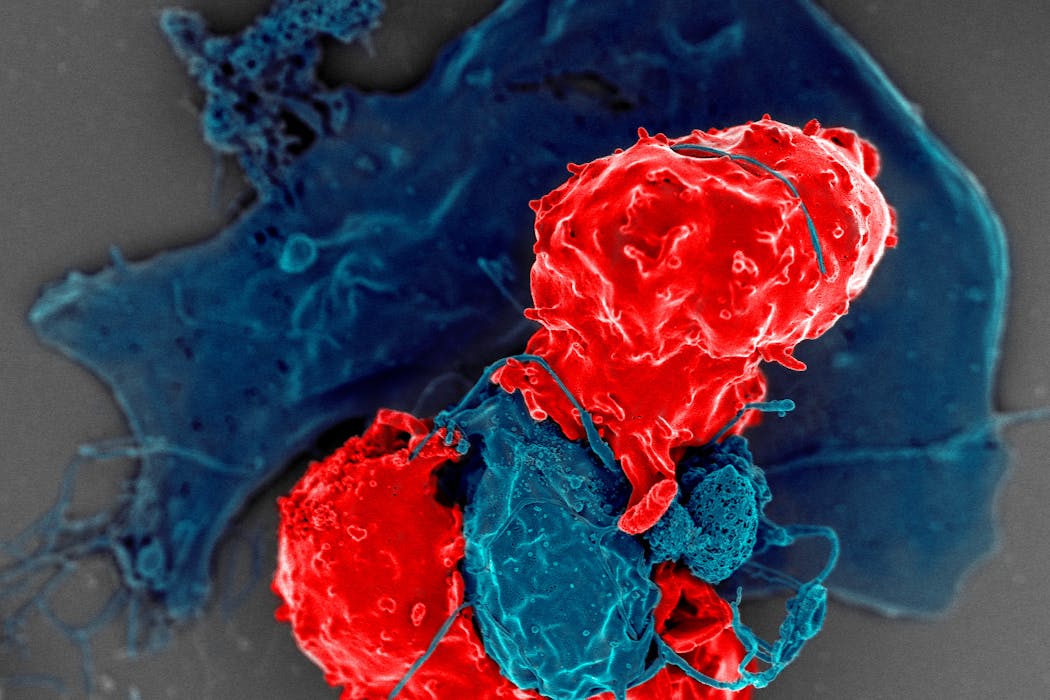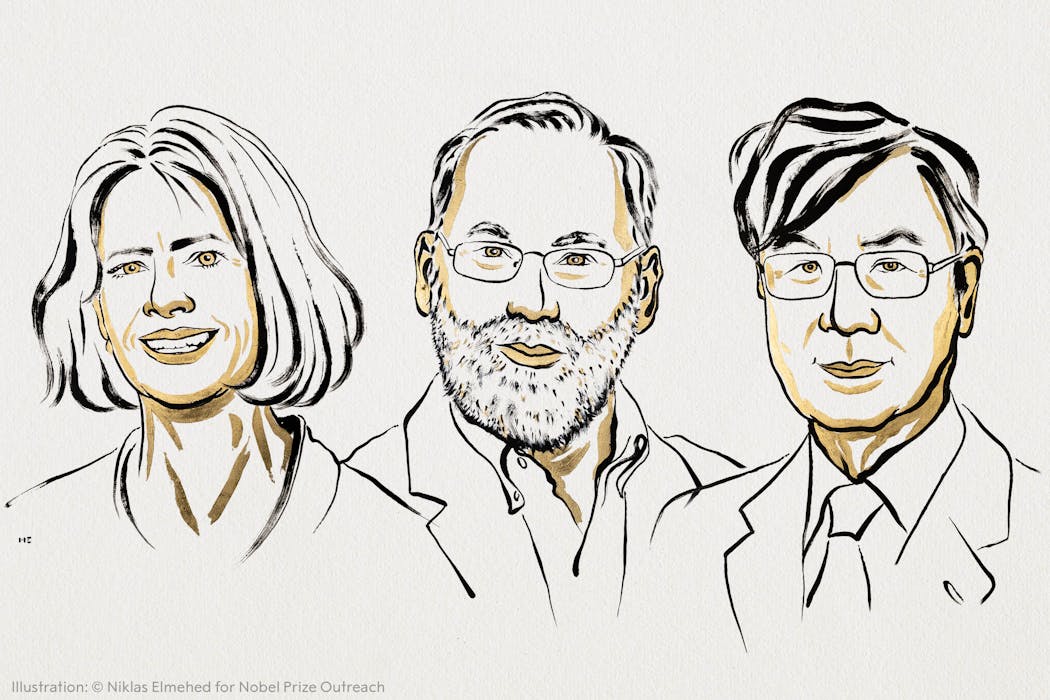How does your immune system stay balanced? A Nobel Prize-winning answer
- Written by Aimee Pugh Bernard, Associate Professor of Immunology and Microbiology, University of Colorado Anschutz Medical Campus

Every day, your immune system performs a delicate balancing act[1], defending you from thousands of pathogens that cause disease while sparing your body’s own healthy cells. This careful equilibrium is so seamless that most people don’t think about it until something goes wrong.
Autoimmune diseases[2] such as Type 1 diabetes, lupus and rheumatoid arthritis are stark reminders of what happens when the immune system mistakes your own cells as threats it needs to attack. But how does your immune system distinguish between “self” and “nonself”?
The 2025 Nobel Prize in physiology or medicine[3] honors three scientists – Shimon Sakaguchi[4], Mary Brunkow[5] and Fred Ramsdell[6] – whose groundbreaking discoveries revealed how your immune system maintains this delicate balance. Their work on two key components of immune tolerance – regulatory T cells and the FOXP3 gene[7] – transformed how researchers like me[8] understand the immune system, opening new doors for treating autoimmune diseases and cancer.
The 2025 Nobel Prize in physiology or medicine was awarded to Shimon Sakaguchi, Mary Brunkow and Fred Ramsdell.How immune tolerance works
While the immune system is designed to recognize and eliminate foreign invaders such as viruses and bacteria, it must also avoid attacking the body’s own tissues. This concept is called self-tolerance[9].
For decades, scientists thought self-tolerance was primarily established in the parts of the body that make immune cells, such as the thymus for T cells and the bone marrow for B cells. There, newly created immune cells that attack “self” are eliminated during development through a process called central tolerance[10].
However, some of these self-reactive immune cells escape this process of elimination and are released into the rest of the body. Sakaguchi’s 1995 discovery[11] of a new class of immune cells, called regulatory T cells, or Tregs, revealed another layer of protection: peripheral tolerance. These cells act as security guards of the immune system, patrolling the body and suppressing rogue immune responses that could lead to autoimmunity.
While Sakaguchi identified the cells, Brunkow and Ramsdell[14] in 2001 uncovered the molecular key that controls them. They found that mutations in a gene called FOXP3 caused a fatal autoimmune disorder in mice. They later showed that similar mutations in humans lead to immune dysregulation and a rare and severe autoimmune disease called IPEX syndrome[15], short for immunodysregulation polyendocrinopathy enteropathy X-linked syndrome. This disease results from missing or malfunctioning regulatory T cells.
In 2003, Sakaguchi confirmed that FOXP3 is essential[16] for the development of regulatory T cells. FOXP3 codes for a type of protein called a transcription factor[17], meaning it helps turn on the genes necessary for regulatory T cells to develop and function. Without this protein, these cells either don’t form or fail to suppress harmful immune responses.
Harnessing the immune system for medicine
Regulatory T cells can be heroes or villains, depending on the context. When regulatory T cells don’t work, it can lead to disease. A breakdown in immune tolerance[18] can result in autoimmune diseases, where the immune system attacks healthy tissues. Conversely, in cancer, regulatory T cells can be too effective in suppressing immune responses[19] that might otherwise destroy tumors.
Understanding how FOXP3 and regulatory T cells work launched a new era in immunotherapies[20] that harness the immune system to treat autoimmune diseases and cancer. For autoimmune diseases such as rheumatoid arthritis[21] and Type 1 diabetes[22], researchers are exploring ways to boost the function of Tregs. For cancer[23], the goal is to inhibit Tregs, allowing the immune system to target tumors more aggressively.
Beyond disease treatment, this research may also improve organ transplantation[26], where immune tolerance is crucial to prevent rejection. Scientists are exploring how to engineer or expand Tregs to help the body accept transplanted tissues over the long term.
Continuing to unlock the secrets of immune regulation can help lead to a future where the immune system can be precisely tuned like a thermostat[27] – whether to turn it down in autoimmunity or rev it up against cancer.
The 2025 Nobel Prize reminds us that science, at its best, doesn’t just explain the world – it changes lives.
References
- ^ balancing act (theconversation.com)
- ^ Autoimmune diseases (medlineplus.gov)
- ^ Nobel Prize in physiology or medicine (www.nobelprize.org)
- ^ Shimon Sakaguchi (scholar.google.com)
- ^ Mary Brunkow (www.nobelprize.org)
- ^ Fred Ramsdell (www.nobelprize.org)
- ^ regulatory T cells and the FOXP3 gene (www.nobelprize.org)
- ^ researchers like me (scholar.google.com)
- ^ self-tolerance (www.ncbi.nlm.nih.gov)
- ^ central tolerance (openstax.org)
- ^ Sakaguchi’s 1995 discovery (pubmed.ncbi.nlm.nih.gov)
- ^ Giwlz/Wikimedia Commons (en.wikipedia.org)
- ^ CC BY-SA (creativecommons.org)
- ^ Brunkow and Ramsdell (doi.org)
- ^ IPEX syndrome (primaryimmune.org)
- ^ FOXP3 is essential (doi.org)
- ^ transcription factor (doi.org)
- ^ breakdown in immune tolerance (doi.org)
- ^ too effective in suppressing immune responses (doi.org)
- ^ new era in immunotherapies (doi.org)
- ^ rheumatoid arthritis (doi.org)
- ^ Type 1 diabetes (doi.org)
- ^ For cancer (doi.org)
- ^ Kevbonham/Wikimedia Commons (commons.wikimedia.org)
- ^ CC BY-SA (creativecommons.org)
- ^ improve organ transplantation (doi.org)
- ^ precisely tuned like a thermostat (theconversation.com)
Authors: Aimee Pugh Bernard, Associate Professor of Immunology and Microbiology, University of Colorado Anschutz Medical Campus





